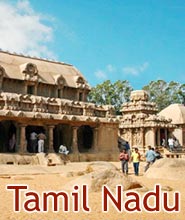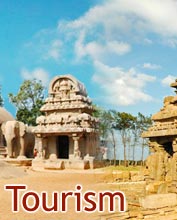 Nagapattinam
is located 320 kilometers from Chennai, the capital of Tamilnadu. Its
long stretch of coastline runs along the Bay of Bengal for nearly 200
kilometers. Due to its prominence on the fisheries map Nagapattinam has
one of the most thriving harbors in India. The city has some very famous
temples such as Shri Kayahorana Swami, Neelayathatchi Amman, Sowriraja
Perumal and Nellukkadai Mariamman. The name is derived from its ancient
name 'Nagur'. It was called so because of the Nagurs, an ancient and now
somewhat extinct aboriginal race that inhabited this place.
Nagapattinam
is located 320 kilometers from Chennai, the capital of Tamilnadu. Its
long stretch of coastline runs along the Bay of Bengal for nearly 200
kilometers. Due to its prominence on the fisheries map Nagapattinam has
one of the most thriving harbors in India. The city has some very famous
temples such as Shri Kayahorana Swami, Neelayathatchi Amman, Sowriraja
Perumal and Nellukkadai Mariamman. The name is derived from its ancient
name 'Nagur'. It was called so because of the Nagurs, an ancient and now
somewhat extinct aboriginal race that inhabited this place. Nagapattinam is a unique town that has its own historical and cultural significance. Nagapattinam was one of the constituents of Cholamandalam, and was acclaimed as the most prominent of the then cities. The city contributed to the glory of the erstwhile Chola Kingdom. It was the Cholas who built the Nagapattinam Kayaroganam Shiva temple in the 6th century AD. Some of the famous Shivite poets such as Appar, Sambandar, and Sundarar were associated with this temple.
Nagapattinam has great significance in Buddhism as well. Nagapattinam is mentioned as Padarithitha in ancient Buddhist literature. The Pallava King Rajasimha permitted a Chinese king to build Buddha Vihar in Nagapattinam. This Buddha Vihar was known as Sudamani Vihar.
A Portuguese commercial center was established in Nagapattinam in the year 1554 and since then Christianity began to take root through Portuguese influence. The Portuguese traders took control of ten villages around the shores and built a harbor and a garrison. With the advent of Portuguese, the Velankanni Church came in to existence.
In the year 1658 the Dutch tried to evict the Portuguese from Nagapattinam in order to establish their own commercial center. This led to a bloody battle where Portuguese were routed. An agreement ensured that all the 10 villages that were in the control of the Portuguese were transferred to the Dutch. Dutch contributed a lot to the architecture of Nagapattinam. The Dutch built as many as ten Churches and a hospital. They also struck coins with the name Nagapattinam engraved in Tamil. In the year 1781 this town fell into the hands of the British after the prolonged battles. All the 277 villages along with its headquarter Nagur were handed over to the East India Company.
The town was completely devastated by the Tsunami that struck the southern hemisphere in the year 2005. Wide scale relief and restoration works by the state government ensured the restoration of many of the buildings and monuments.










